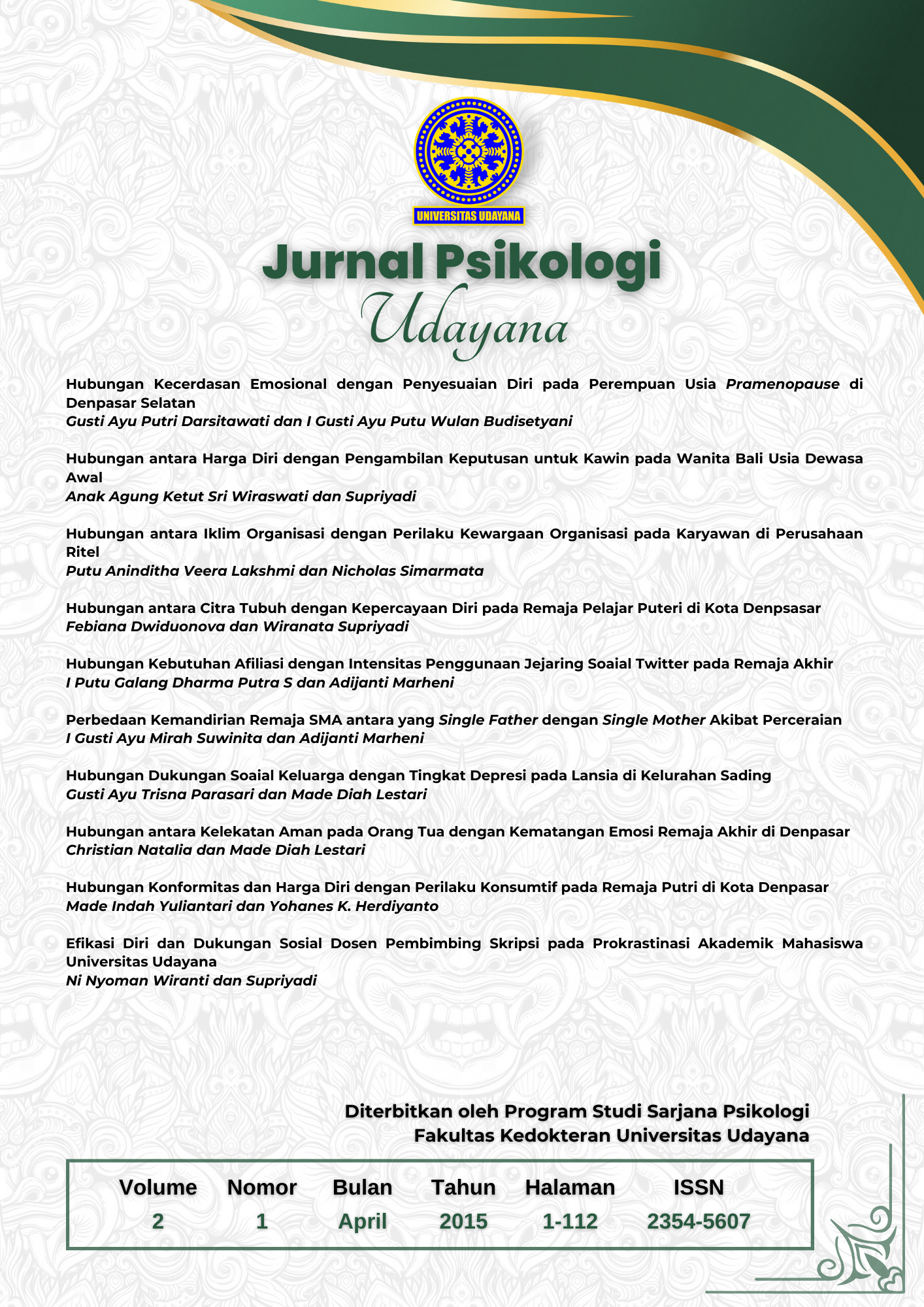HUBUNGAN ANTARA KELEKATAN AMAN PADA ORANG TUA DENGAN KEMATANGAN EMOSI REMAJA AKHIR DI DENPASAR
Abstract
It is need a special attention to understand the development of adolescence. There is so many changes happened in adolescence, like emotional change. Adolescents need emotional maturity to help them deal with crisis situations. Emotional maturity can be attained through parent secure attachment, because parent secure attachment provide fine condition for emotional development. Secure attachment means the lasting bond which formed as a result of the quality relationship between child and primary caregiver (parent) troughout the human life span (Bowlby, 1988). This study aimed to examine the relationship between parent secure attachment and emotional maturity, also to find out the amount of parent secure attachment influence emotional maturity.
The sampling technique used in this study was area probability random sampling. Subjects of this research were 419 late adolescents, age 16–21 years old in Denpasar. The scales used in this study were the parent security attachment scale adapted from the Inventory Parent and Peer, Indonesian version by Dewi (2013) and emotional maturity scale based on dimensions proposed by Walgito (2010). The data were analyzed by simple regression.
Through regression analysis, found that parent secure attachment and emotional maturity were significantly and positively correlated, which the increase of parent secure attachment score will be followed by excalation of emotional maturity score (B=0,406; p=0,000). Coefficient of determination equal to 1,19 indicates the parent secure attachment contribution to the emotional maturity was 19,1%, and 80,9% was contributed by other factors.
Keywords: parent secure attachment, emotional maturity, late adolescent.
Downloads
Authors who publish with this journal agree to the following terms:
- Authors retain copyright and grant the journal right of first publication with the work simultaneously licensed under a Creative Commons Attribution-ShareAlike 4.0 International License that allows others to share the work with an acknowledgement of the works authorship and initial publication in this journal.
- Authors are able to enter into separate, additional contractual arrangements for the non-exclusive distribution of the journals published version of the work (e.g., post it to an institutional repository or publish it in a book), with an acknowledgement of its initial publication in this journal.
- Authors are permitted and encouraged to post their work online (e.g., in institutional repositories or on their website) prior to and during the submission process, as it can lead to productive exchanges, as well as earlier and greater citation of published work (See The Effect of Open Access).













